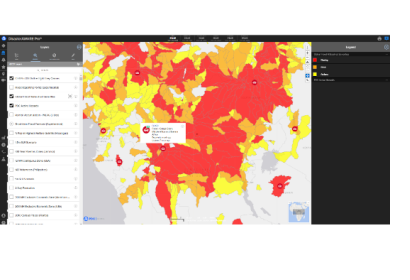This is an excerpt from an article by NASA Earth Science, Applied Sciences.
Floods are among the most deadly and destructive disasters worldwide, and climate change has only increased their severity. To make matters worse, many smaller communities lack the tools they need to detect and respond to floods, leaving them vulnerable to the full force of their impacts.
To help protect these communities, NASA's Earth Applied Sciences Disasters program area has partnered with several leading scientific institutions to develop a new flood detection tool called "Model of Models" (MoM). This tool combines data from open-source hydrological models with Earth observing satellite data to generate global flood risk severity updates several times a day. This is the first time that comprehensive global flood early warnings have been available at the sub-watershed level, giving communities the knowledge they need to take early action to protect themselves.
But for this knowledge to be put into use, it must reach the hands of local decision-makers – that’s where the Pacific Disaster Center (PDC) comes in. The PDC is a University of Hawai’I applied science and research center specializing in disaster risk reduction science and technology, that supports organizations worldwide in creating a safer, more disaster resilient world. NASA partnered with the PDC to integrate MoM into their global multi-hazard alerting platform DisasterAWARE. When the MoM detects a high likelihood of flooding in a region, DisasterAWARE sends a flood early warning notification to impacted communities, letting them quickly take the steps necessary to save lives and livelihoods. Local authorities may use this information to activate emergency response plans, order evacuations, or deploy response teams and humanitarian relief.
[...]
Image: This screenshot from DisasterAWARE Pro shows flood severity warnings at a sub-watershed level generated using NASA’s Model of Models (MoM) for the Congo Basin region of Africa in Oct. 2022. Credits: Pacific Disaster Center, NASA

